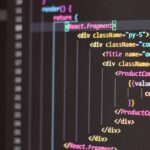Python – A Programming Language (Also known as Object Oriented Programming Language (OOPS))
What is a Programming Language ?
What is a Programming Language?
A programming language is a way for us to communicate with computers. Computers don’t understand things like “2 + 3,” they can only understand electrical signals.
There are two types of electrical signals: high voltage (represented by 1) and low voltage (represented by 0). This is called the binary system, and computers can only understand 1s and 0s.
In the past, people had to write code in binary, which was very difficult. So, in the 1950s and 1960s, researchers created assembly language as a simpler alternative. However, assembly language was still complex to write and understand.
To make programming easier, researchers then developed low-level languages like C, C++, and Java. These languages provided more flexibility, allowing software engineers to do things like change operating system settings.
However, not everyone needs to know the inner workings of a computer, like how RAM is used. That’s where high-level languages come in. They allow data analysts and data scientists to work with computers without diving into those details.
What is Python ?
Python is a popular high-level programming language. It was created in the late 1980s and is known for its simplicity and readability. Python is designed to be easy to understand and write, making it a great choice for beginners.
Python has a wide range of applications and is used in various fields such as web development, data analysis, artificial intelligence, scientific computing, and more. It has a large standard library that provides pre-written code for common tasks, making it efficient and convenient for developers.
One of the reasons for Python’s popularity is its emphasis on code readability. It uses indentation and whitespace to structure code blocks, which makes the code visually appealing and easier to comprehend.
Python supports both procedural and object-oriented programming paradigms. It offers a rich set of features, including dynamic typing, automatic memory management, and support for multiple programming styles.
Python’s versatility and extensive ecosystem of libraries and frameworks contribute to its widespread adoption. It has a large and active community of developers who contribute to its growth, provide support, and share code through various online platforms.
Overall, Python is a powerful and beginner-friendly programming language that allows developers to create a wide range of applications efficiently and effectively.

